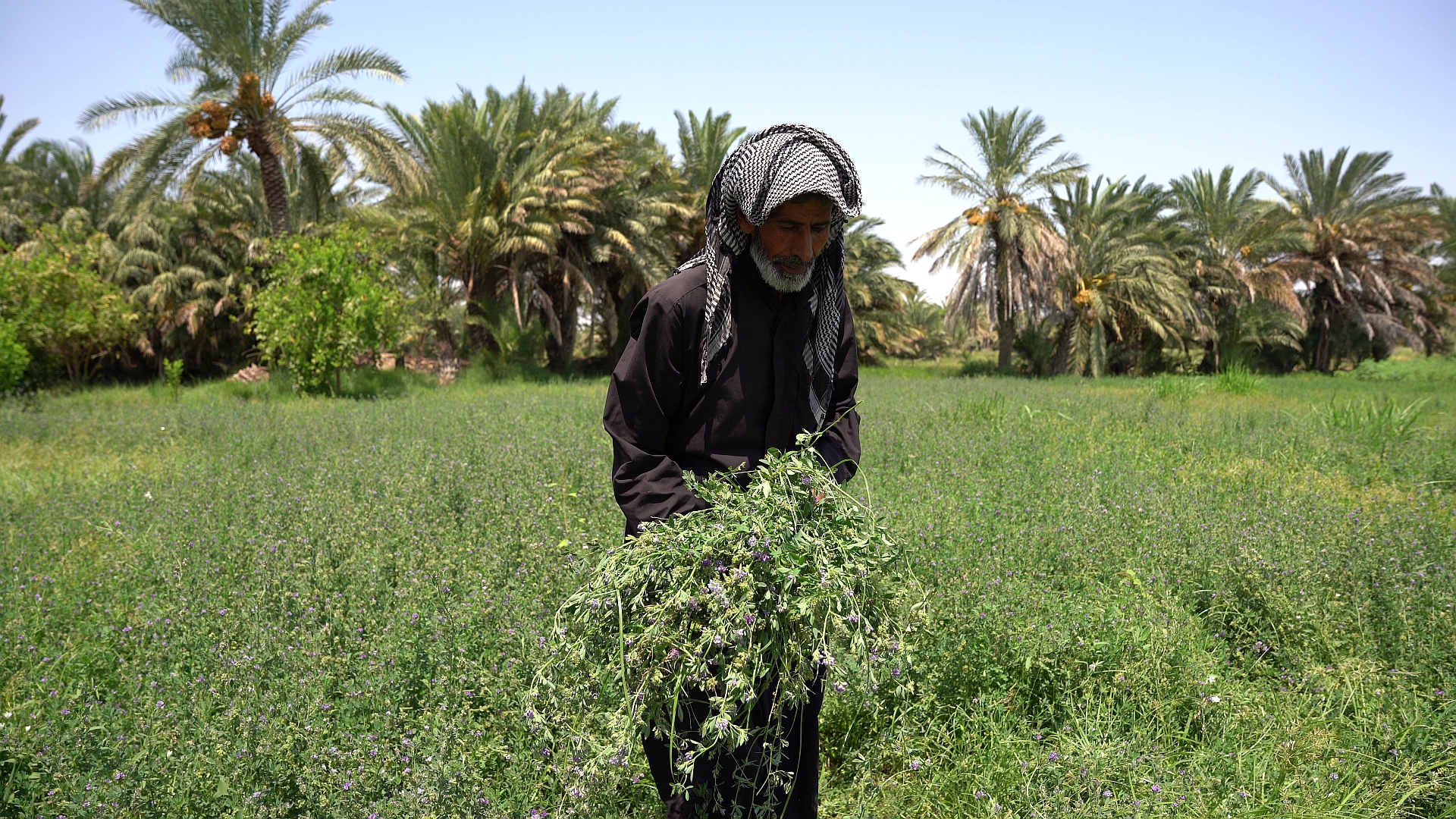
Reviving Iraq’s rangelands and marshlands: Practical steps toward sustainable land management
FAO/Reem AlSadoon
22/07/2025
Understanding the context
Southern Iraq’s marshland, desert and rangeland ecosystems have long supported farming and grazing communities. In ThiQar, the Mesopotamian Marshes have provided water, food, and income for generations, while the arid rangelands of Al Muthanna have sustained pastoralist livelihoods through seasonal grazing and dryland agriculture. However, years of poor land management, salinity, climate impacts and weak institutional coordination have left the region increasingly vulnerable. These problems have reduced agricultural productivity and affected the quality of life for people living in both governorates. Without proper restoration, both the environment and the livelihoods that depend on it are at risk.
The problem and its impacts
Iraq’s marshlands and surrounding ecosystems have experienced serious decline over recent decades. Since the 1980s, marshland areas have shrunk by over 84 percent, with open water surfaces decreasing by up to 90 percent. Large upstream dams and flood control have altered the flow of the Euphrates and Tigris rivers, reducing the vital flooding needed to sustain marsh health. Meanwhile, unplanned local re-flooding complicates restoration efforts. These changes have severely damaged the wetlands in ThiQar and the drylands of Al Muthanna, threatening biodiversity and essential ecosystem services.
Unsustainable land and water use practices have worsened the situation. Overgrazing, soil salinization, pollution, and invasive species have reduced agricultural productivity and farmers’ incomes. Fragmented land ownership, limited credit, and weak markets add to local challenges. Institutional gaps left government staff ill-equipped to monitor degradation or promote sustainable land management, and without a unified policy or coordinated strategy, restoration efforts have been both fragmented and underfunded.
Why the project was launched
The Food and Agriculture Organization of the United Nations (FAO), with funding from the Global Environment Facility (GEF) and co-financing from the Government of Iraq through its Ministry of Environment (MoE), Ministry of Agriculture (MoA), and Ministry of Water Resources (MoW), launched the Sustainable Land Management for Improved Livelihoods in Degraded Areas of Iraq, a comprehensive project to promote sustainable land management. It was designed with a clear goal: to reverse land degradation in the marshland areas of southern Iraq and promote sustainable land use through application of agroecology and conservation agriculture practices.
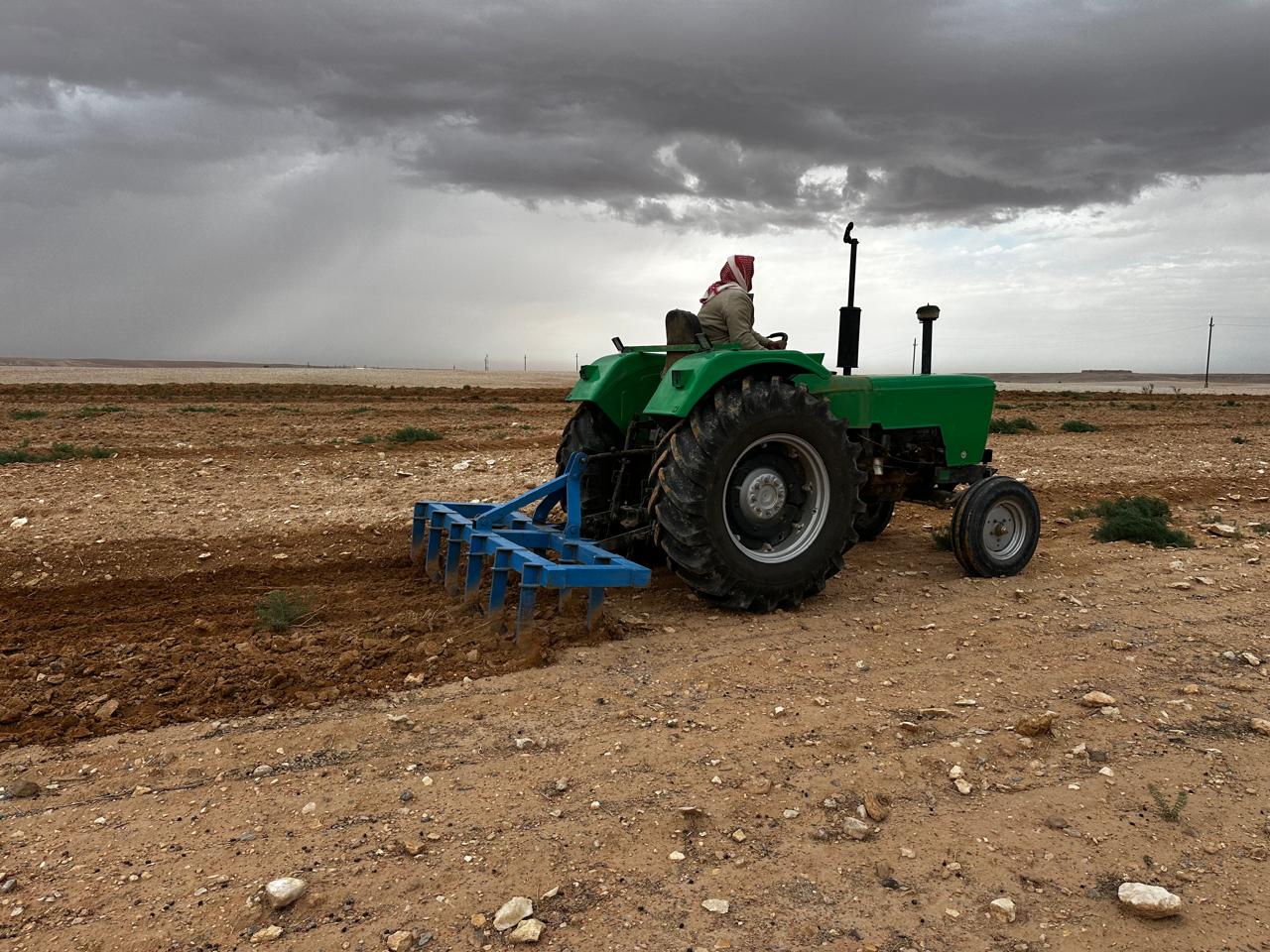
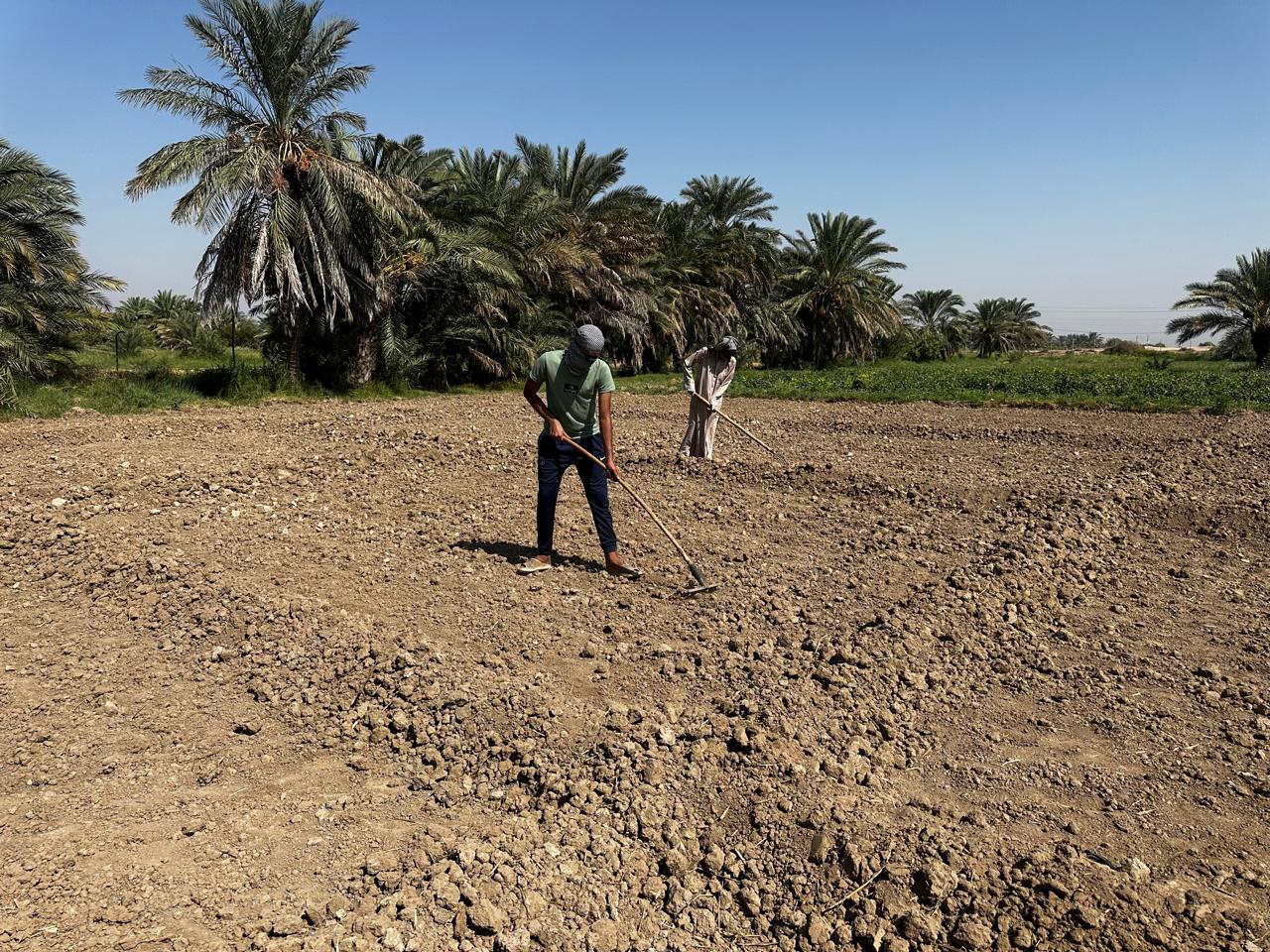
©FAO/Iraq
Policy and institutional support
The project aimed to strengthen institutional capacity, training over 120 staff members from key ministries and equipping them with the skills and knowledge to implement sustainable land management (SLM) practices. These efforts were closely tied to policy development, including the creation of a national Sustainable Land Management Strategy and Marshland Conservation Action Plan for Iraq (2026–2030) aiming to address issues related to water scarcity, improper soil and water management, deforestation, salt accumulation, absence of urban planning, and climate change impacts.
Field-level implementation
On the ground, the project introduced sustainable farming and wetland restoration practices that directly benefited communities. A total of 66 Farmer Field Schools (FFS) were established as living labs where farmers could test and adopt improved methods. These sites covered more than 12 000 hectares of degraded land brought under sustainable management, including 4 030 hectares of rehabilitated marshlands and over 8 000 hectares of restored agricultural and grazing lands.
Trained extension officers from the Ministry of Agriculture, 60 in total, were trained to lead FFS sessions and provided farmers with practical, hands-on guidance in conservation agriculture and agroecology. The lead farmer model helped embed these practices within communities, allowing peer-to-peer learning to flourish.
By mid-2025, more than 1600 farmers had adopted conservation agriculture practices, with approximately 1200 of these reporting higher yields and increased incomes. Unlike traditional methods that rely on deep ploughing, residue burning, and monocropping, conservation agriculture uses shallow planting, retains crop residues, and promotes crop rotation or intercropping. These changes improve soil structure, boost fertility, and reduce erosion and pest pressures. Additionally, over 1000 farmers adopted agroecology practices and marshlands conservation techniques in southern Iraq, with over 700 of these (including 180 women) reporting higher economic returns. These improvements provided immediate financial incentives and laid the foundation for long-term agricultural resilience.
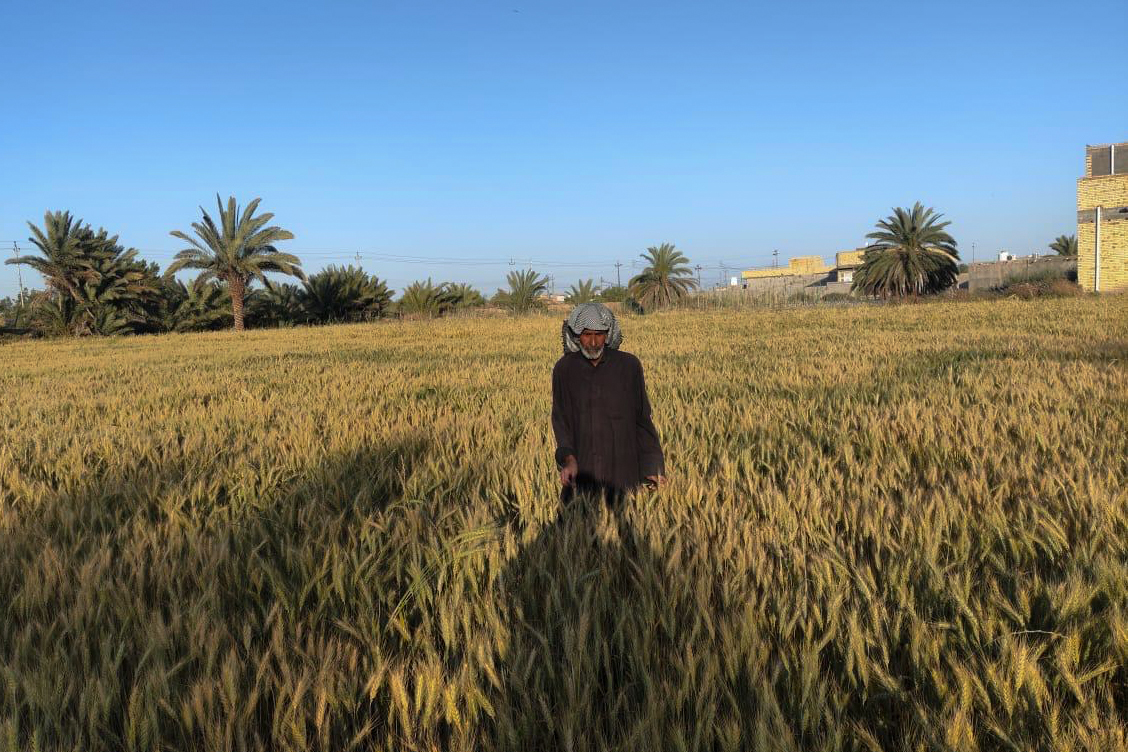
©FAO/Iraq
Engagement and knowledge sharing
Promoting knowledge was another central element of the project. National knowledge platforms and strategies will ensure that lessons learned will not be lost. As part of the exit strategy, the Government of Iraq, through the Ministry of Environment, has committed to allocating national funds for the implementation of the 2026–2030 Strategic Action Plan. This underscores a shared commitment to scaling up successes and ensuring the continuity of interventions beyond the project’s lifetime, which formally ends in January 2026.
Gender participation and community outreach
Engaging women initially proved challenging, especially in areas where agricultural work is typically male dominated. To combat this, the project promoted a couples-based approach, encouraging husbands and wives to attend FFS sessions together. This resulted in a 30 percent year-on-year increase in women’s participation, i.e., from 451 women in 2024 to 589 in mid-2025. By empowering women and ensuring that both spouses were involved in decision-making, the project helped promote more resilient household dynamics and fostered broader social inclusion.
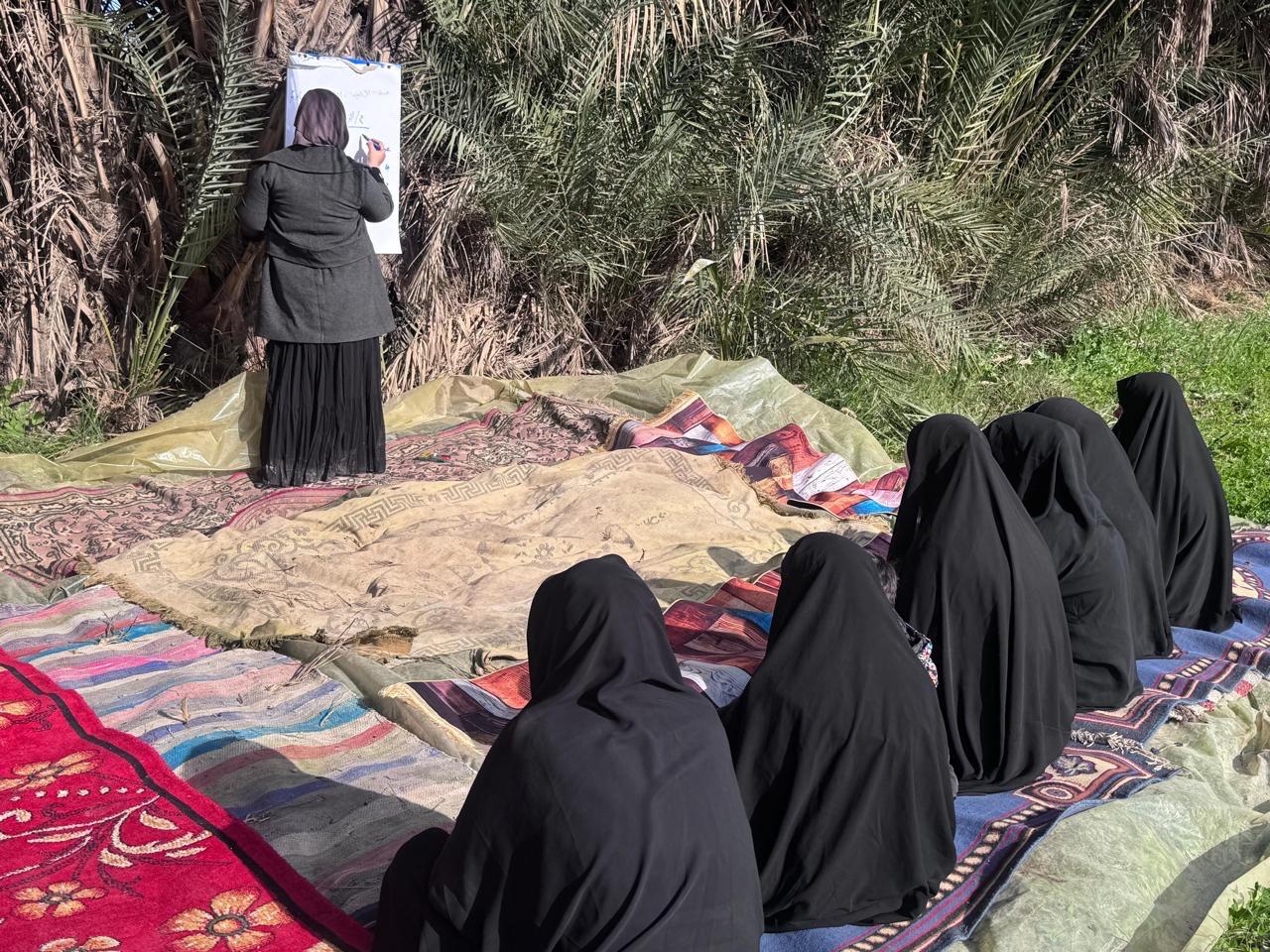
©FAO/Iraq
Looking ahead
As the project nears completion, it leaves behind more than restored land and healthier wetlands, it leaves a foundation for lasting change. Farmers are reaping the rewards of sustainable practices, and national institutions are better prepared to lead Iraq’s response to land degradation with the right tools, policies, and trained personnel in place.
By combining national planning with field-level interventions, the project has provided a practical model for integrated land restoration in marshland areas. The progress so far offers valuable lessons for future investments in sustainable agriculture and ecosystem management in Iraq and beyond.
